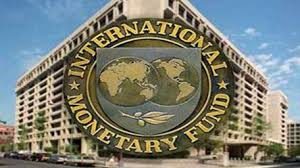
The International Monetary Fund (IMF) has said that the macroeconomic stability gains the country had achieved in the past four years have started to erode and could pose risks to its positive economic outlook.
The global lender released a communiqué – two days after its executive board concluded Article-IV consultations with Pakistan – depicting a gloomy future outlook for Pakistan’s economy that is in complete contrast to the ‘feel good’ picture portrayed by Finance Minister Ishaq Dar.
The IMF also said that the government’s debt is equal to 66.6% of GDP, significantly higher than 59.3% the finance minister claimed in front of the National Assembly this week. The lender puts Pakistan’s debt at over Rs21.2 trillion while Dar claimed it was Rs18.9 trillion.
It was the first Article-IV consultation review by the IMF after expiry of its three-year $6.2 billion Extended Fund Facility (EFF) programme ended in September last year. The IMF directors also noted that policy implementation in Pakistan has “weakened recently and macroeconomic vulnerabilities are reemerging.”
“Macroeconomic stability gains made under the 2013-16 EFF-supported programme have begun to erode and could pose risks to the economic outlook,” said the IMF. It added that fiscal consolidation has slowed, with even the revised 2016-17 budget deficit target of 4.2% of GDP unlikely to be exceeded.
The IMF further said that Pakistan’s current account deficit has widened and is expected at 3% of GDP in 2016-17 or over $9 billion, driven by fast rising imports of capital goods and energy. Initially, it had estimated the current account deficit at only 1.5% of GDP or $4.5 billion. The huge gap between original and revised current account deficit projections also highlights the IMF failure.
The Fund said that Pakistan’s foreign exchange reserves have declined in the context of a stable rupee-dollar exchange rate, urging Islamabad to allow greater exchange rate flexibility. In just past two weeks, the official foreign currency reserves decreased over $1.5 billion.
The lender’s fresh assessment of Pakistan’s economy is close to a situation predicted by independent Pakistani economists, but the global lender ignored those warnings and adopted an ‘accommodative approach’ to favour Pakistan.
These independent economists have also projected that Pakistan will again seek out an IMF programme by 2018, although Dar has publically claimed that Pakistan will not avail another loan from the lender even in 2019.
The IMF said some renewed accumulation of arrears in the power sector has been observed, and financial losses of ailing public-sector enterprises continue to weigh on scarce fiscal resources.
Recent media reports, quoting discussions in the Cabinet Committee of Energy, have revealed that circular debt has again crossed Rs400 billion after the government cleared Rs480 billion in 2013.
Key external risks, according to the IMF, include lower trading partner growth, tighter international financial conditions, a faster rise in international oil prices, and failure to generate sufficient exports to meet rising external obligations from large-scale foreign-financed investments.
However, the IMF said that Pakistan’s outlook for economic growth is favorable, with real GDP estimated at 5.3% in the outgoing fiscal year, strengthening to 6% over the medium term on the back of stepped-up China-Pakistan Economic Corridor (CPEC) investments, improved availability of energy, and growth-supporting structural reforms. Inflation has been gradually increasing but remains contained, and the financial sector has remained sound. But it said that this favourable outlook is now facing risks.
Against the backdrop of reemerging risks to Pakistan’s economy, IMF directors called on Pakistan to safeguard the macroeconomic gains of recent years through continued implementation of sound policies, and to continue with structural reforms to achieve higher and more inclusive growth.
They encouraged the authorities to strengthen fiscal consolidation. They noted that the 2017-18 budget aims at further gradual consolidation — albeit at a slower pace than targeted under the Fiscal Responsibility and Debt Limitation (FRDL) Act — and will likely require additional revenue measures in the light of recent revenue underperformance.
To this end, the directors recommended mobilising additional tax revenues by broadening the tax base and strengthening tax administration, and enhancing the composition of public spending by containing the wage bill’s growth. They have sought further reduction in electricity subsidies, and also recommended strengthening the national fiscal federalism framework and public debt management.















